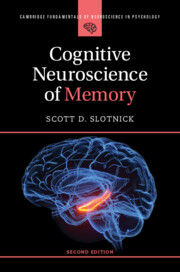Refine search
Actions for selected content:
388 results
Obstetric complications, cortical gyrification, and cognition in first-episode psychosis
-
- Journal:
- Psychological Medicine / Volume 55 / 2025
- Published online by Cambridge University Press:
- 22 July 2025, e209
-
- Article
-
- You have access
- Open access
- HTML
- Export citation
The role of first language skills, working memory, and anxiety in second language reading: Implications for assessment of language learners with specific learning differences
-
- Journal:
- Studies in Second Language Acquisition , First View
- Published online by Cambridge University Press:
- 22 July 2025, pp. 1-23
-
- Article
-
- You have access
- Open access
- HTML
- Export citation
Transcranial magnetic stimulation to left VLPFC or right DLPFC promotes forgetting in working memory
-
- Journal:
- Psychological Medicine / Volume 55 / 2025
- Published online by Cambridge University Press:
- 30 June 2025, e183
-
- Article
-
- You have access
- Open access
- HTML
- Export citation

Cognitive Neuroscience of Memory
-
- Published online:
- 12 June 2025
- Print publication:
- 30 January 2025
-
- Textbook
- Export citation
13 - How Do Adolescents Think About Risk and Reward?
- from Section III - Adolescence
-
- Book:
- Child Development
- Published online:
- 19 June 2025
- Print publication:
- 12 June 2025, pp 194-212
-
- Chapter
- Export citation
10 - How Does Children’s Memory Work?
- from Section II - Middle Childhood
-
- Book:
- Child Development
- Published online:
- 19 June 2025
- Print publication:
- 12 June 2025, pp 150-165
-
- Chapter
- Export citation
Effects of 28-day simvastatin administration on emotional processing, reward learning, working memory, and salivary cortisol in healthy participants at-risk for depression: OxSTEP, an online experimental medicine trial
-
- Journal:
- Psychological Medicine / Volume 55 / 2025
- Published online by Cambridge University Press:
- 22 May 2025, e155
-
- Article
-
- You have access
- Open access
- HTML
- Export citation
Comparisons between processing linguistic and mathematical negations from the perspective of the practice effect and working memory
-
- Journal:
- Language and Cognition / Volume 17 / 2025
- Published online by Cambridge University Press:
- 02 May 2025, e47
-
- Article
-
- You have access
- Open access
- HTML
- Export citation
Cognitive and neural abnormalities: working memory deficits in bipolar disorder offspring
-
- Journal:
- Psychological Medicine / Volume 55 / 2025
- Published online by Cambridge University Press:
- 02 May 2025, e130
-
- Article
-
- You have access
- Open access
- HTML
- Export citation
8 - What Are Individual Differences and How Do They Affect L2 Acquisition?
-
- Book:
- Key Questions in Second Language Acquisition
- Published online:
- 11 April 2025
- Print publication:
- 17 April 2025, pp 173-194
-
- Chapter
- Export citation
The interplay of learners’ cognitive abilities in the learning and automatization of miniature language grammar: What matters beyond general IQ?
-
- Journal:
- Studies in Second Language Acquisition / Volume 47 / Issue 2 / May 2025
- Published online by Cambridge University Press:
- 28 March 2025, pp. 592-616
- Print publication:
- May 2025
-
- Article
- Export citation
Changes in referential production among Japanese-English bilingual returnee children: a five-year longitudinal study
-
- Journal:
- Bilingualism: Language and Cognition , First View
- Published online by Cambridge University Press:
- 18 March 2025, pp. 1-12
-
- Article
-
- You have access
- Open access
- HTML
- Export citation
Chapter Four - Memory and Aging
-
- Book:
- Cognitive and Social Neuroscience of Aging
- Published online:
- 14 February 2025
- Print publication:
- 13 February 2025, pp 89-124
-
- Chapter
- Export citation
Chapter Eight - Working Memory
-
- Book:
- Cognitive Neuroscience of Memory
- Published online:
- 12 June 2025
- Print publication:
- 30 January 2025, pp 180-207
-
- Chapter
- Export citation
The cognitive underpinnings of irony comprehension: Fluid intelligence but not working memory modulates processing
-
- Journal:
- Applied Psycholinguistics / Volume 45 / Issue 6 / November 2024
- Published online by Cambridge University Press:
- 24 January 2025, pp. 1219-1250
-
- Article
-
- You have access
- Open access
- HTML
- Export citation

Human Memory
- The General Theory and Its Various Models
-
- Published online:
- 17 January 2025
- Print publication:
- 19 December 2024
Minding the gap: Similarity-based interference in L1 and L2 processing of long-distance Wh-dependencies
-
- Journal:
- Applied Psycholinguistics / Volume 45 / Issue 6 / November 2024
- Published online by Cambridge University Press:
- 17 January 2025, pp. 1165-1186
-
- Article
-
- You have access
- Open access
- HTML
- Export citation
The relationship between working memory, production, and comprehension: evidence from children’s errors in complex wh questions
-
- Journal:
- Journal of Child Language , First View
- Published online by Cambridge University Press:
- 13 January 2025, pp. 1-29
-
- Article
-
- You have access
- Open access
- HTML
- Export citation
Association between auditory mismatch negativity and visual working memory in school-age children with attention deficit/hyperactivity disorder
-
- Journal:
- Psychological Medicine / Volume 54 / Issue 16 / December 2024
- Published online by Cambridge University Press:
- 08 January 2025, pp. 4798-4808
-
- Article
-
- You have access
- Open access
- HTML
- Export citation
State-Space Analysis of Working Memory in Schizophrenia: An FBIRN Study
-
- Journal:
- Psychometrika / Volume 78 / Issue 2 / April 2013
- Published online by Cambridge University Press:
- 01 January 2025, pp. 279-307
-
- Article
- Export citation
